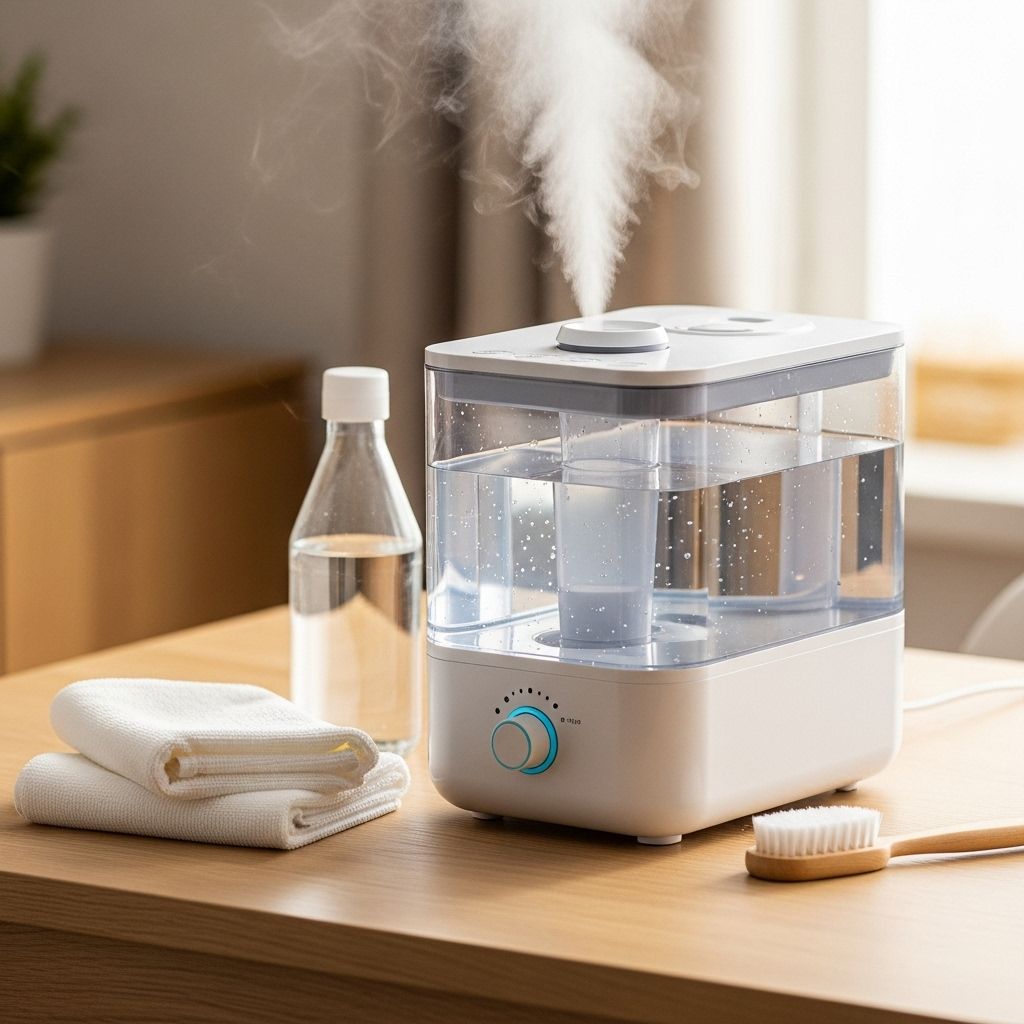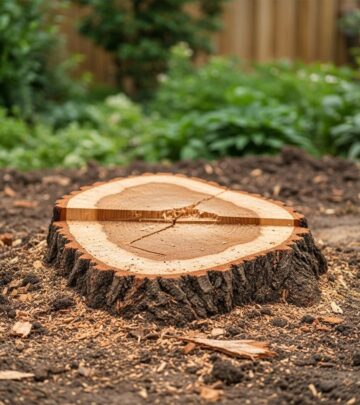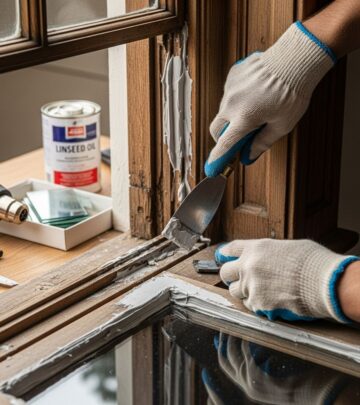How To Clean A Humidifier In 6 Simple Steps For A Healthy Home
Keep moisture fresh and bacteria-free by mastering care tips for optimal indoor air.

Image: HearthJunction Design Team
How to Clean and Maintain Your Humidifier for a Healthy Home
Humidifiers are essential for maintaining comfortable moisture levels in your home, especially during dry months. However, without proper cleaning and maintenance, these devices can quickly become breeding grounds for mold, mildew, and bacteria, which can lead to health problems and poor indoor air quality. This comprehensive guide walks you through the step-by-step process of cleaning a humidifier, offers maintenance tips to keep it running efficiently, and answers your most frequently asked questions. By following these best practices, you can enjoy the benefits of a clean and safe humidifier all year long.
Why Cleaning Your Humidifier Matters
Humidifiers add moisture to the air, which helps alleviate dry skin, irritated sinuses, and other discomforts caused by low humidity. However, the same moist environment that provides relief can also promote the growth of mold, bacteria, and mineral deposits inside the unit. Regular cleaning is crucial for several reasons:
- Prevents mold and bacterial growth: Unclean humidifiers can circulate contaminants into the air.
- Improves air quality: A clean humidifier ensures you’re breathing in fresh, healthy moisture.
- Extends the life of your device: Routine maintenance keeps your humidifier running efficiently and prevents damage from scale buildup.
- Protects your health: Avoid respiratory issues linked to airborne mold and bacteria.
How Often Should You Clean Your Humidifier?
The frequency of cleaning depends on usage and manufacturer recommendations, but as a general rule:
- Empty, rinse, and dry the tank daily.
- Deep clean and disinfect at least once a week.
During periods of heavy use, or if you notice visible buildup, increase cleaning frequency. Always refer to your owner’s manual for model-specific guidance.
What You’ll Need
- White distilled vinegar
- Liquid chlorine bleach (optional, for deep disinfecting)
- 3% hydrogen peroxide (optional alternative to bleach)
- Clean, soft cloths or sponges
- Brush or soft bottle brush (for hard-to-reach areas)
- Gloves (recommended when using bleach)
- Water
- Towel for drying
Step-by-Step Guide: How to Clean a Humidifier
1. Unplug and Disassemble the Humidifier
Always begin by unplugging your humidifier. Remove the water tank and any detachable components such as filters, covers, or trays. Take care to consult your manufacturer’s instructions for specific disassembly directions.
2. Empty and Rinse the Tank
Pour out any remaining water from the tank and base. Rinse thoroughly with fresh water to remove loose debris and minerals.
3. Clean with Vinegar
- Fill the water tank halfway with undiluted white vinegar.
- Swish the vinegar to wet all interior surfaces.
- Let the vinegar sit in the tank and the base for 20 to 30 minutes. This helps loosen mineral deposits and scale.
- For stubborn buildup, use a soft brush or sponge to scrub all corners, crevices, and the water reservoir.
4. Disinfect the Humidifier
After cleaning, you can use either bleach or hydrogen peroxide for deeper disinfection. Note: Never mix bleach with vinegar—use one method, not both, to avoid harmful fumes.
- Bleach method: Mix 1 teaspoon of liquid chlorine bleach in 1 gallon of water. Pour enough solution into the tank to cover all surfaces. Swish and let it sit for 15–20 minutes.
- Hydrogen peroxide method: Some brands recommend using a mix of 3% hydrogen peroxide and water for this step. Fill the tank with the solution, swish, and allow it to stand for 15–20 minutes.
5. Rinse Thoroughly
After disinfecting, empty all solutions from the tank and base. Rinse repeatedly with clean water until the smell of vinegar, bleach, or peroxide is completely gone. Leftover residue can affect the operation of your humidifier and air quality.
6. Dry and Reassemble
Use a clean towel to dry all parts thoroughly. Allow components to air dry completely before reassembling to prevent mold and bacteria from returning. Reinstall all parts and refill the tank with fresh, distilled water before using the humidifier again.
Special Tips for Different Types of Humidifiers
Humidifiers come in several types, each with its own nuances for cleaning and maintenance.
| Type | Cleaning Notes |
|---|---|
| Cool Mist/Evaporative | Watch for mineral buildup on wicks or filters. Replace filters as recommended. |
| Warm Mist/Steam Vaporizers | Mineral scale forms quickly. Clean heating element with vinegar regularly. |
| Ultrasonic | Disinfect often, as these can disperse bacteria if unclean. Use distilled water to minimize deposits. |
| Whole-Home/Flow-Through | Shut off power before servicing. Clean evaporative pads with vinegar. Replace pads as needed to prevent scale and bacteria. |
Daily and Weekly Maintenance Tips
- Use distilled or demineralized water: This prevents mineral buildup and white dust.
- Empty and refill daily: Always start with fresh water to reduce bacteria growth.
- Wipe surfaces and tank: Use a dry cloth or towel to remove moisture after each use.
- Check and replace filters: Follow manufacturer recommendations for filter changes.
- Air-dry when not in use: Store your humidifier with all parts dry to prevent mildew.
Warning: Humidifier Cleaning Mistakes to Avoid
- Never mix bleach and vinegar. This combination produces toxic fumes.
- Don’t let water sit in the tank for extended periods. Stagnant water quickly develops bacteria and mold.
- Do not use harsh scrubbers or scouring pads that can damage plastic components.
- Always unplug before cleaning to prevent electrical hazards.
How to Store Your Humidifier When Not in Use
- Disassemble and clean all parts thoroughly.
- Rinse well and let all components air dry fully.
- Store the unit in a cool, dry place, away from direct sunlight and moisture.
Frequently Asked Questions (FAQs)
Why does my humidifier smell musty?
A musty or unpleasant odor usually indicates mold or bacteria growth inside the tank or base. Regular, thorough cleaning and drying after each use will help prevent odors.
What is the safest cleaning solution for my humidifier?
White distilled vinegar is effective for routine cleaning and removing mineral deposits. For deep disinfection, use either a dilute bleach solution or 3% hydrogen peroxide, but never both at once.
Can I use tap water in my humidifier?
It is best to use distilled or demineralized water. Tap water often contains minerals that can create buildup and white dust, affecting both the device and your indoor air quality.
How often should I replace the filters?
Replace filters according to the manufacturer’s instructions—typically every 1 to 3 months, or whenever they become visibly dirty or develop an odor.
What should I do if I see mold inside the tank?
Empty and clean the tank immediately using the vinegar soak described above, followed by disinfecting with bleach or hydrogen peroxide. Increase cleaning frequency in the future to prevent recurrence.
Conclusion
Cleaning your humidifier regularly is essential for maintaining good air quality, protecting your health, and prolonging the life of your device. Establish a consistent routine of daily rinsing and weekly deep cleaning with safe, effective products. Read your owner’s manual for specific requirements, and never skip steps to save time—your home’s air and your well-being depend on a clean, well-maintained humidifier.
Additional Resources
- Consult your humidifier’s user manual for manufacturer-specific cleaning instructions.
- Look for replacement filters and cleaning solutions at major home appliance retailers.
- Contact the manufacturer for troubleshooting or further maintenance advice as needed.
References
- https://eastindiaco.com/?n=1038526891124
- https://www.youtube.com/watch?v=aXauiSh5zoY
- https://www.onehourheatandair.com/expert-tips/home-life/how-to-clean-a-humidifier-and-how-often/
- https://www.bhg.com/homekeeping/house-cleaning/tips/how-to-clean-humidifier/
- https://www.goodhousekeeping.com/home/cleaning/a25692098/how-to-clean-humidifier/
Read full bio of Srija Burman










